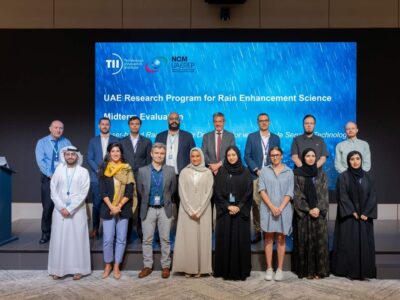While some workers in the UAE and Saudi Arabia are optimistic about future employment opportunities, others are struggling to find a work-life balance, according to the Halian 2025 GCC Market Report and Salary Guide.
It found that 37 per cent of employees are very optimistic about future employment opportunities, with 24.3 per cent hoping to receive a promotion within their current organisation.
At the same time, 35 per cent of UAE employees perceive their work-life balance as fair, the percentage is slightly higher for KSA, with 38 per cent of employees reporting a positive balance.
UAE and Saudi work trends
In addition, while 45 per cent of respondents overall felt that their workload was manageable and could be completed within a standard workweek, 41 per cent of respondents from KSA and almost 50 per cent from UAE indicated that they had felt the pressure to work extra hours.
In terms of salaries and increases, 40 per cent of professionals surveyed reported an increase of between 5 per cent and 10 per cent in their salaries this year.
Of these, 49 per cent of increases were performance-based, and 14.9 per cent were due to a job change. 44 per cent of respondents also noted that they expect a salary increase before the end of 2024.
Further underscoring their positivity about the GCC labour market, 47 per cent of employees are actively engaged in pursuing additional education and certification.
When it comes to benefits, the report found that medical insurance is the most in-demand benefit (80 per cent), followed by air tickets home (55 per cent) and flexible work arrangements (41 per cent).
As such, better compensation and benefits (42 per cent), followed by career advancement (23 per cent), are the main reasons employees are changing jobs.
The report also found that organisations in the GCC are placing a strong emphasis on technology, with a growing demand for talent skilled in technological initiatives, reflecting plans to invest more heavily in technology in the coming years.
With Gen Z making up 11.6 per cent of respondents, the report also reveals interesting findings about the generation and their role in the workplace.
Key observations include that clear career growth opportunities are most important to this generation, while 38.23 per cent of participants also indicated that they believe their Gen Z colleagues have a positive influence on their team dynamics.
In addition, the 2025 GCC Market Report and Salary Guide highlights key trends related to employers in the region.
Most notable findings in this regard include organisations’ future outlook, with 71 per cent of companies looking to hire more employees before the end of 2024 and 48 per cent of companies more optimistic about growth opportunities in 2025 than in 2024.
Another interesting observation is the majority of companies (60 per cent) are open to increasing salaries if employees perform according to expectations and are willing to upskill themselves.
Halian CEO Stuart Fry said: “In today’s globalised world, understanding the intricacies of regional employment landscapes is crucial for any business striving for sustained success. Our team has carefully gathered, analysed, and synthesised data from diverse sectors across the GCC, yielding a comprehensive perspective on salary trends, talent acquisition, and the shifting dynamics of the recruitment environment.”
Indicating a combined sense of optimism, along with a strategic focus on skill development and career growth, the report reveals a strong foundation for long-term growth and prosperity in the region, suggesting a promising economic outlook for the Middle East.
For the report, Halian surveyed more than 2,700 professionals in these industries:
- Technology
- Finance
- Marketing
- Creative and Design
- Healthcare and Life Sciences
- Construction








